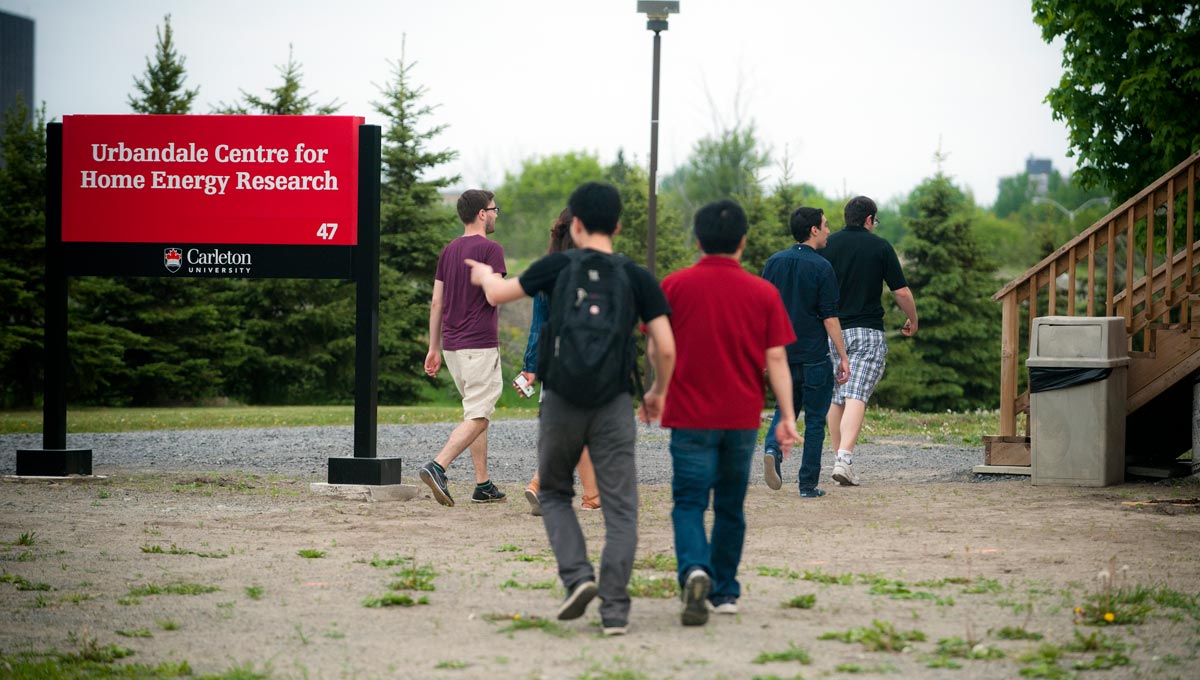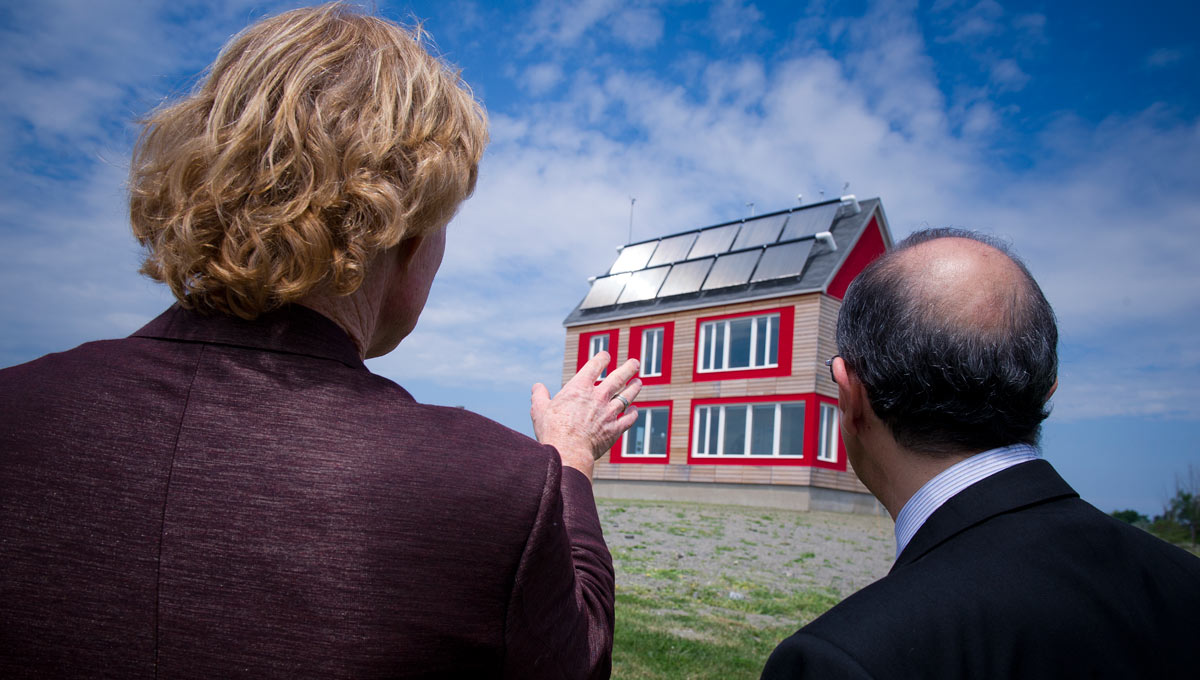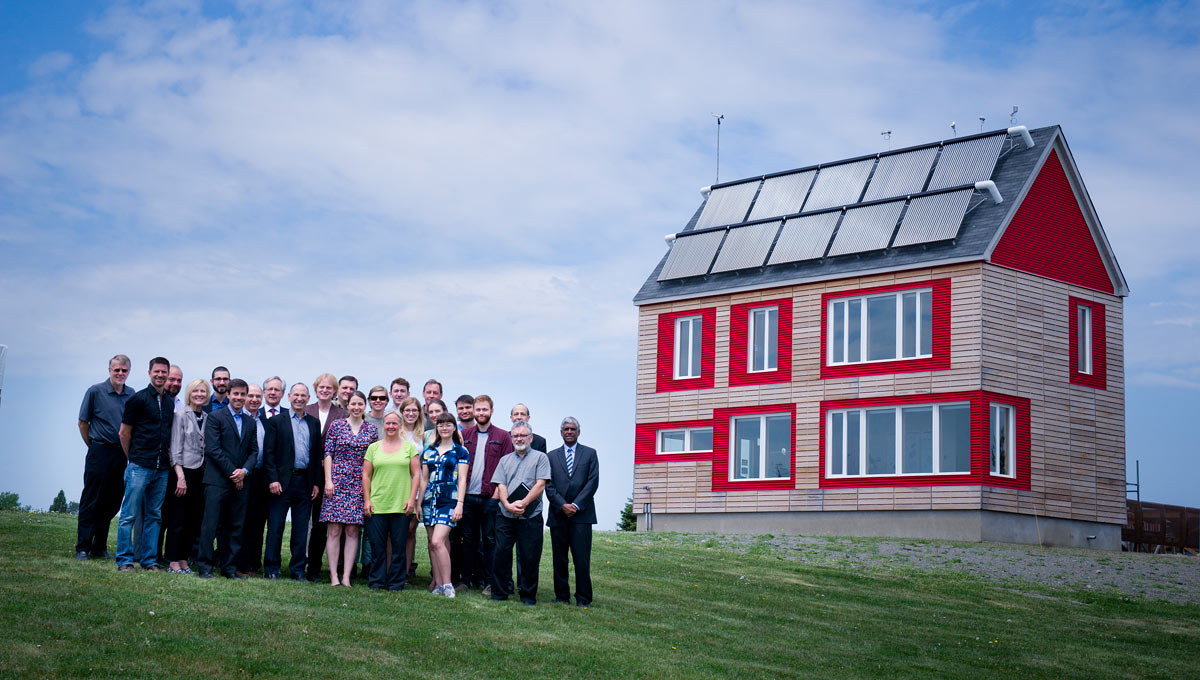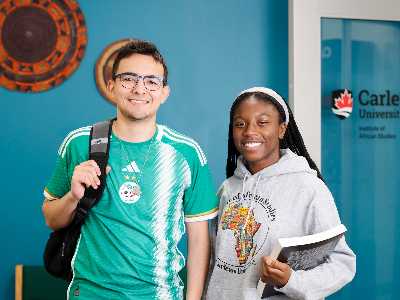By Kirsten Fenn
Photos by Ashley Fraser
After several years of research on solar energy solutions, design proposals, construction and installation of energy-efficient equipment, Carleton University is celebrating the grand opening of the Urbandale Centre for Home Energy Research.
Located atop a small hill at the north end of University Drive, with red accents and rooftop solar collectors, the 1,600-square-foot house is designed as a two-storey single-family home. But its real function is to enable ongoing research to improve energy efficiency through solar power and zero-carbon technologies.
“Canadians use a lot of energy,” said Ian Beausoleil-Morrison, Canada Research Chair in Innovative Energy Systems for Residential Buildings and the Carleton engineering professor leading the $1.5-million solar house project. “We use almost as much energy per capita as the highest consuming country in the world. That’s not something to be proud of, and we need to do something about it.”

Although building companies are improving energy efficiency, one-third of all electricity generated in Canada is consumed within our homes, he said, a level of demand we must curb in order to tackle climate change.
Those issues inspired Beausoleil-Morrison to create the Urbandale Centre alongside Sheryl Boyle, associate professor in Architecture, and Cynthia Cruickshank, associate professor in Mechanical and Aerospace Engineering.
“We’re seeking solutions that allow us to drastically reduce the amount of energy we consume and make greater use of solar energy resources,” Beausoleil-Morrison said at the opening event on Wednesday, May 25.

Ian Beausoleil-Morrison (left) and Rafik Goubran, Dean of the Faculty of Engineering and Design, look out at the Urbandale Centre for Home Energy Research at Carleton.
A number of graduate and undergraduate students have also benefitted from conducting research experiments in the house, which harvests thermal energy through solar collectors on the roof and floors. That energy is then stored in basement water tanks and an underground sand store system in front of the house, and used to heat the building throughout the year.
Windows in the house are also focused at the south side, with none on the north side, in order to maximize heat from the southern exposure.

Finding Solar Energy Solutions is a Collaborative Effort
The Urbandale Centre has been supported by the Office of the Vice-President (Research and International), Urbandale Construction and Carleton’s research-intensive Faculty of Engineering and Design. The research has progressed with $582,242 in funding from the Canada Foundation for Innovation and a matching donation from the Ontario Research Fund. Urbandale provided $141,206 and $56,250 in in-kind contributions.
While we have an understanding of solar energy, “we need to know more” in order to harness it and use it wisely, said Carleton President Roseann Runte.
She said the collaboration between the community and university on the solar house is making that science possible.
“Thank you everyone for your contributions … on this very exciting project that will train a lot of students and others on a very important area of research,” said Nimal Rajapakse, vice-president (Research and International).
“This is a great day for Carleton.”

Wednesday, May 25, 2016 in Environment and Sustainability, Innovation, Research
Share: Twitter, Facebook



